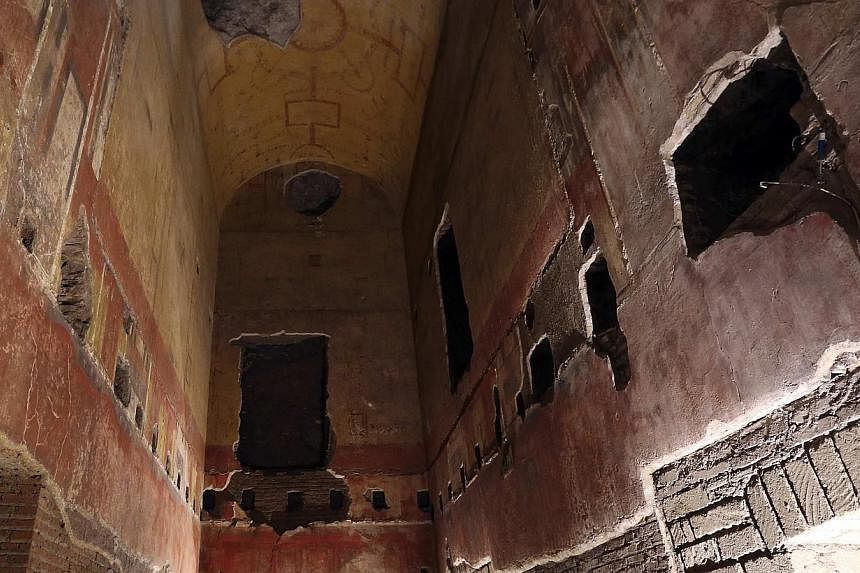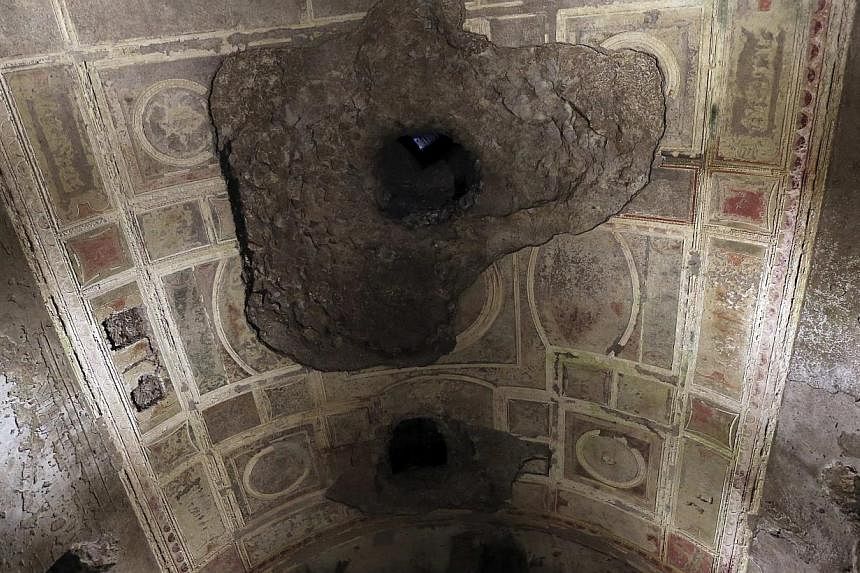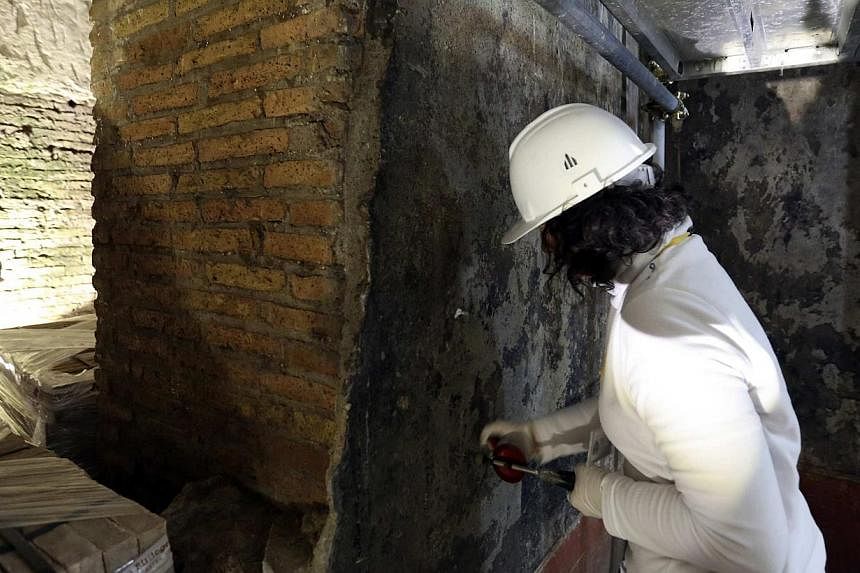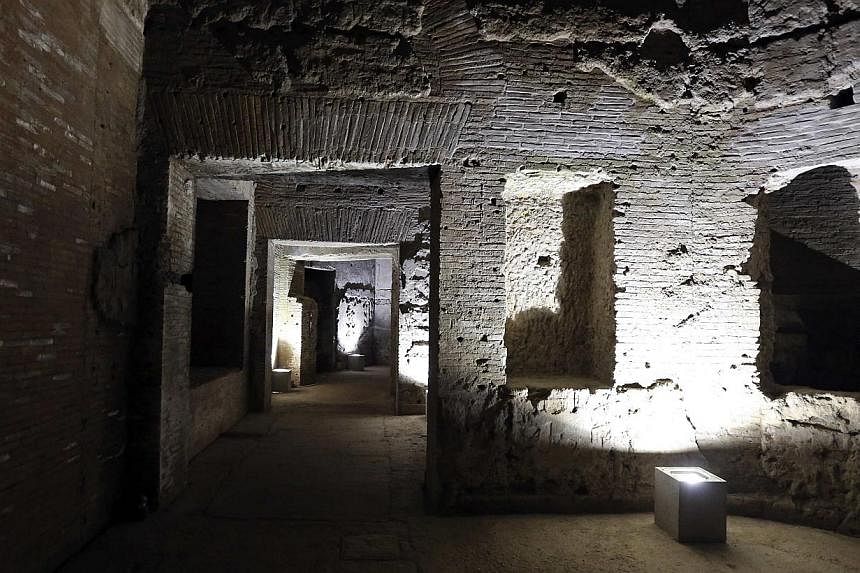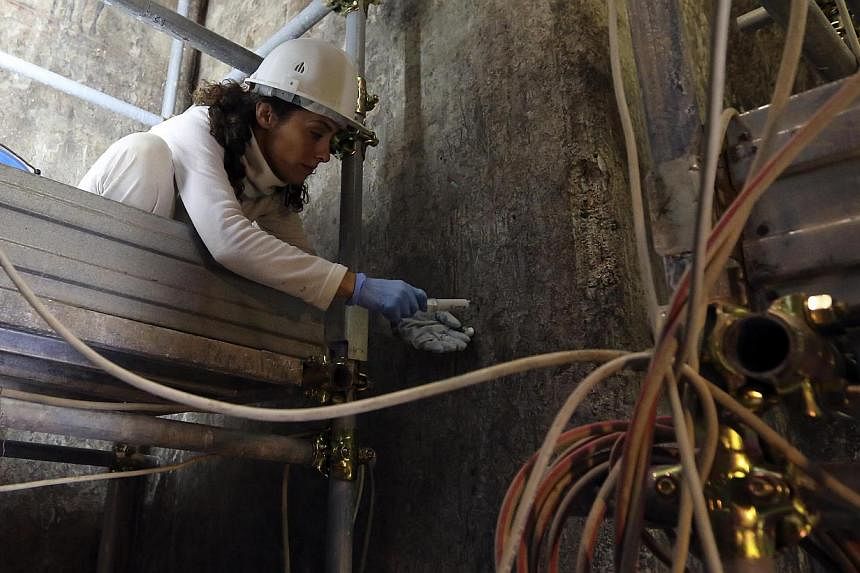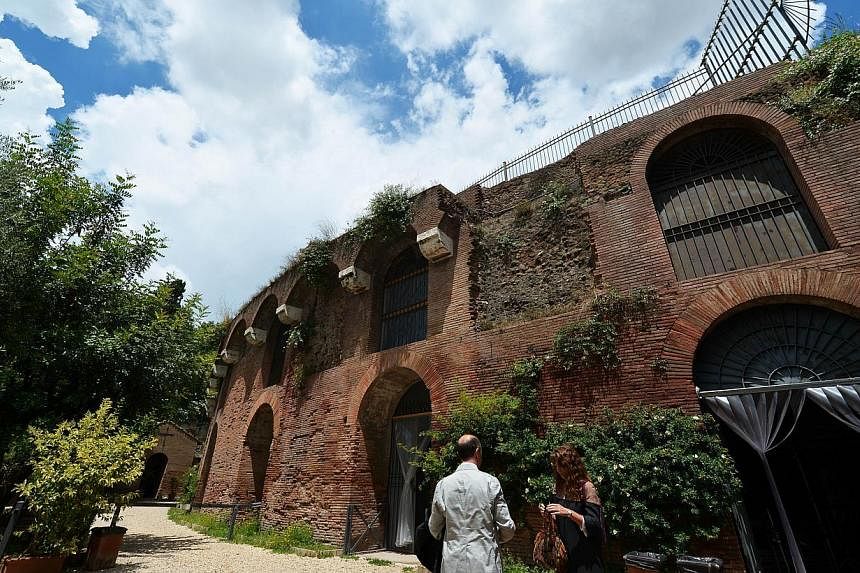ROME (Reuters) - The golden palace that the Emperor Nero built as a monument to himself after half of ancient Rome was consumed by fire is reopening to the public even though its renovation isn't finished yet.
The main palace of the "Domus Aurea" or "House of Gold"complex, which once included an artificial lake where the Colosseum now stands, was closed in 2005 for emergency repairs and briefly reopened in 2007 before closing again.
From Sunday, visitors can come for a tour of the almost 2,000-year-old site, where they will be kitted out with protective helmets and guided by an archaeologist.
The Domus Aurea is the second of Rome's monuments this year to be showcased during renovation.
A bridge was put up around the Trevi Fountain to let tourists get closer while its marble facade has a 2.2 million euro (S$3.55 million) facelift.
Caring for thousands of years worth of decaying art and architecture is a perennial problem in Italy.
The Domus Aurea is particularly hard to maintain because the later emperor Trajan filled it with rubble and built his own baths on top.
In December 2005, Italy's then-culture minister said water leaking into the 12-metre-high underground chambers could cause parts of the structure to collapse, and closed it to visitors, who had previously numbered around 1,000 a day.
Italy has ploughed 18 million euros ($22.79 million) into strengthening the buried monument since 2006.
The decision to open it during weekends when restoration crews are not working was taken with that in mind.
"The funds come from the state, so all tax-paying citizens contribute to making these works possible," Rome's archaeological superintendent Mariarosaria Barbera said at a preview of the site.
The Domus Aurea, so named because of the gold leaf covering some of its walls, was said to have contained a 36.6 metre statue of Nero. It was rediscovered in the 15th century.
Renaissance painters including Raphael and Michelangelo lowered themselves on ropes through holes in the ceiling to study the palace's frescoes, which are now at risk from humidity levels that reach 90 per cent.
Included in the renovation project is an ambitious plan to reduce by more than two-thirds the weight of the garden that presses on the palace from above, at a total cost of 31 million euros.
Attending the preview of the site, Italian Culture Minister Dario Franceschini repeated a call for private and public investment in Italy's "cultural assets" and said he hoped a new tax credit would encourage donations.
